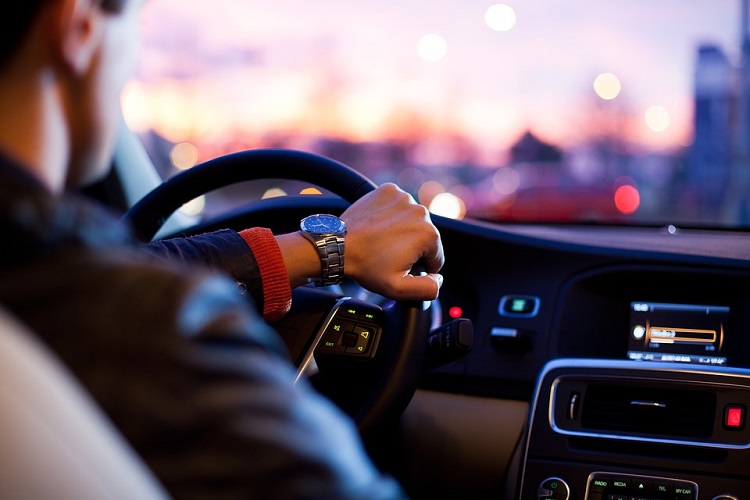In today’s rapidly evolving world, the integration of modern technologies has revolutionized various aspects of our lives, including transportation. As we progress towards a future where driving is safer, more efficient, and environmentally friendly, embracing modern technologies becomes paramount. This article delves into the realm of modern technologies for safe and responsible driving, shedding light on innovative solutions shaping the future of transportation.

As we navigate the roads of the 21st century, integrating advanced safety features and smart technologies in vehicles is not just a trend but a necessity. Today we discuss vehicle safety, exploring how these innovations contribute to a safer, more responsible driving experience.
6 Modern Technologies for Safe and Responsible Driving
Let’s explore six modern technologies that promote responsible driving and contribute to a safer and more sustainable transportation system.
Autonomous Emergency Braking (AEB) Systems
The journey begins with a technology that has become a cornerstone of vehicle safety: Autonomous Emergency Braking (AEB) systems. AEB systems are designed to prevent accidents before they happen. These systems continuously monitor the vehicle’s surroundings using a combination of sensors and cameras.
If the system detects an imminent collision with another vehicle, pedestrian, or obstacle, it automatically applies the brakes, reducing the severity of the crash or avoiding it altogether. This proactive safety measure represents a significant leap forward in mitigating human error, the leading cause of road accidents.
By integrating AEB systems, manufacturers offer drivers a critical safety net, making split-second decisions that can save lives.
Adaptive Cruise Control (ACC) With Lane Keep Assist
Adaptive Cruise Control (ACC) combined with Lane Keep Assist is a blend of convenience and safety. ACC allows vehicles to maintain a set speed and distance from the car ahead, automatically adjusting the speed to match traffic flow.
When combined with Lane Keep Assist, which gently steers the vehicle back into its lane if it begins to drift without a turn signal, drivers are supported by an invisible co-pilot.
This technology enhances comfort on long journeys and significantly reduces the risk of collision and driver fatigue. However, even with all this great technology, it’s important to consider privacy concerns in smart cars.
The data collected by these systems can be extensive, raising valid questions about how it is stored, used, and protected.
Advanced Driver-Assistance Systems (ADAS)
Another modern solution for driver safety are Advanced Driver-Assistance Systems (ADAS). These systems incorporate a wide range of features designed to improve safety by alerting the driver to potential problems and, in some cases, taking control of the vehicle to avoid danger.
Examples include blind-spot detection and rear-cross traffic alert, which warns of approaching vehicles when reversing. This impressive suite includes forward collision warning, pedestrian detection, and automatic high-beam headlights.
By offering a multi-layered safety net, ADAS technologies help prevent accidents and make driving easier.
Interlock Devices are the Guardian of Responsible Driving
One of the most direct approaches to ensuring responsible driving involves using interlock devices. These devices add a layer of accountability for drivers, particularly those with a history of impaired driving. An interlock device is basically a breathalyzer connected to the vehicle’s ignition system. In order to start the car, the driver must breathe into the device. If the breathalyzer detects alcohol above a pre-set limit, the vehicle will not start. This technology is a stark reminder of the consequences of driving under the influence, providing a physical barrier to irresponsible behavior.
The beauty of an ignition interlock device lies in its simplicity and effectiveness. By requiring a clear demonstration of sobriety, they directly prevent potentially dangerous situations from occurring. This technology has been instrumental in reducing repeat offenses among drivers with prior DUI convictions. The integration of such devices into vehicles represents a proactive approach to road safety, marrying technology with legal enforcement measures.
Vehicle-to-Everything (V2X) Communication
As we advance further into the realm of vehicle safety, Vehicle-to-Everything (V2X) communication emerges as a new innovation. This technology allows vehicles on the road to communicate with each other and with infrastructure, including traffic lights, signs, and pedestrian crosswalks.
The potential of V2X lies in its ability to provide real-time information about road conditions, traffic congestion, accidents, and other critical safety information. By enabling this level of interconnectedness, vehicles can preemptively adjust their routes, speed, and behavior to avoid hazards, thereby significantly reducing the likelihood of accidents.
Augmented Reality (AR) Dashboards
Finally, we explore the futuristic world of Augmented Reality (AR) dashboards, which promise to redefine the driving experience by merging digital information with the physical world. AR dashboards project vital information, such as navigation directions, speed, and alerts, directly onto the windshield, allowing drivers to keep their eyes on the road while staying informed.
By overlaying digital data onto the real-world environment, AR dashboards streamline receiving and processing information, minimizing cognitive load and distraction. This innovation contributes to safer driving by keeping drivers’ focus on their surroundings and enriches the driving experience by seamlessly integrating technology into the fabric of vehicle operation.
Conclusion
As we embrace the era of modern technologies for safe and responsible driving, it is essential to recognize the transformative impact of innovation on the future of transportation. From autonomous vehicles to connected infrastructure, these advancements hold the key to creating a safer, more efficient, and sustainable mobility ecosystem. By harnessing the power of technology and collective action, we can pave the way for a brighter and safer future on the roads.


